Clayfield House, originally known as ‘Turrawan,’ reflects the evolution of Brisbane’s suburban heritage and medical practices. Designed in 1906 by renowned architect Robin Dods, the property initially served as both a residence and surgery for Dr. Arthur Halford. Situated in the suburb of Clayfield, its renaming to "Clayfield House" likely aligned with its geographic location, creating a clear and recognisable identity within the community. Over the years, the house transitioned through multiple uses and owners, adapting to the changing needs of the city while retaining its architectural significance.
In 1905, Dr. Arthur Charles Frederick Halford purchased nearly an acre of land at the corner of Sandgate and London Roads, encompassing re-subdivisions 1-4 and 98-101 of subdivision 3 of portion 79.
That same year, tenders were issued for the construction of a house designed by renowned architect Robin Dods. Completed in August 1905 at a cost of £1382.92, the house is believed to have been built by Hall and Mayer. It served as both a residence and surgery, with the residential entrance facing Sandgate Road and the surgery entrance on London Road. Tennis courts were also built behind the property.
At the time of its construction, the house stood as the only building between Wagner and London Roads.
Photo credit: The House Detective
Charles Ferdinand Marx, one of the earliest landowners in Clayfield area, was not only a practicing medical doctor but also the stepfather of two prominent Brisbane figures, Espie Dods and Robin Dods, both celebrated for their significant contributions to the city’s history. Beyond his medical career, Marx demonstrated his entrepreneurial spirit as a partner in the Rubyanna Sugar Company, highlighting his varied professional pursuits.
The Architect and the House
Robin Dods, a well-known architect in Brisbane, was famous for designing beautiful homes that were also used as medical practices by the city’s leading doctors. One of his most remarkable works, Clayfield House, is located at the corner of Sandgate Road and London Road. It is known as one of the largest and most impressive timber houses he ever created, reflecting his unique style and careful design.
The house was designed to function both as a family home and a professional surgery for Dr. Halford. Its dual-purpose design reflected a trend at the time when doctors often combined their residence and practice. This unique arrangement allowed them to serve patients within the comfort of their own homes.
Photo credit: The House Detective
Robin Dods, designed the iconic Clayfield House, later repurposed by Dr. Halford and other medical practitioners for their practices. As the stepson of Dr. Charles Marx, Dods maintained strong connections to the medical field. Among his many grand designs, several were converted into medical offices for Brisbane's elite, including Archadium Adventures, previously known as Dods House Restaurant.
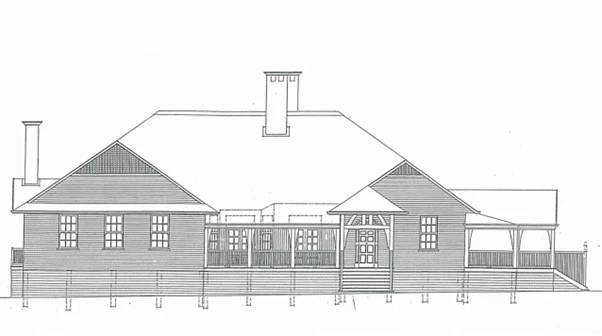
Photo credit: The House Detective
Known as Turrawan, Clayfield House was constructed in 1906, served as both a residence and a surgery for Dr. Halford. It stands out as one of the largest and most expensive timber homes designed by Robin Dods, who was renowned for crafting exceptionally elegant residences.
Evolution of Clayfield House
The story of Clayfield House reflects the changing landscape of Brisbane’s medical practices, residential development, and urban infrastructure. During the late 19th and early 20th centuries, it was common for doctors to operate surgeries within their homes. Small private hospitals, particularly for maternity cases, were also often run from residential properties. This model was familiar to architect Robin Dods, whose stepfather and brother were doctors. Notably, Dods designed a surgery-residence for his brother, Dr Espie Dods, on Wickham Terrace.
Dr Arthur Halford, registered as an obstetrician during this period, followed this tradition. By 1915, he had established a practice at 157 Wickham Terrace, reflecting the growing trend of doctors moving their practices to centralised medical precincts.
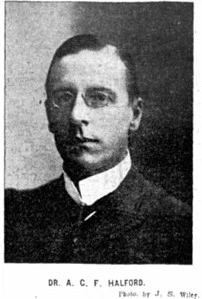
Photo credit: The House Detective
In 1906, Dr. Halford resided at ‘Turrawan.’ However, as traditional home-based surgeries began to decline in popularity, he took a significant step forward by commissioning the construction of Wickham House and establishing his practice at 157 Wickham Terrace by 1915. was built adjacent to the house on Sandgate Road.
In 1920, Dr Halford vacated ‘Turrawan,’ leasing the property to Alexander Murray for five years. In 1922, the adjacent land saw the construction of the 1,500-seat Savoy Picture Theatre on Sandgate Road, marking the area’s transition toward mixed-use development. By 1926, the house was occupied by Dr Neville Sutton, who listed London Road as his primary address.
After Mrs Halford’s passing in 1932, portions of the property were sold in 1935, including parts of the ‘Turrawan’ tennis court, which were subdivided for residential development. Around this time, the house was rotated to face London Road, extending into what was previously the tennis court area. The house remained in the Halford family until 1945 when Dr Halford passed away, and the property was transferred to Savoy Pictures Pty Limited the following year.
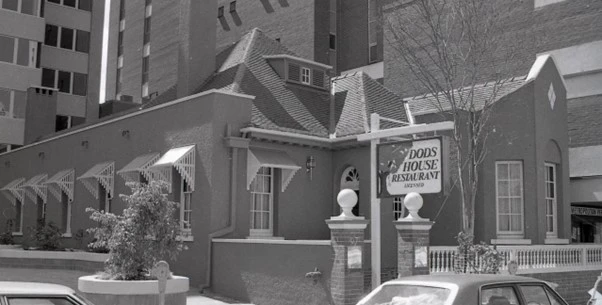
Photo credit: The House Detective
(Before) House that is designed by Robin Dods on Wickham Terrace for his brother, Dr Espie Dods. Robin Dods designed several grand homes that were also used as medical practices for Brisbane’s prominent including Clayfield House that were called Turrawan.
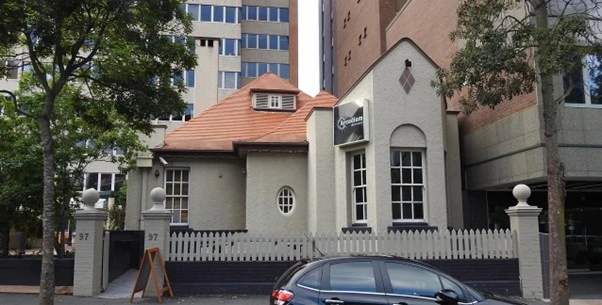
Photo credit: The House Detective
(After) Located at 97 Wickham Terrace, Arcadium Adventures combines history and mystery within a heritage-listed building. Experience immersive escape rooms in a captivating, story-driven setting that bridges Brisbane's past and present.
Later Transformations
By 1960, the property was resurveyed and subdivided into two lots with an easement. The realignment of boundaries indicated that the house had already been relocated to its current position by this time. Lot 1, situated at the corner of Clayfield and London Roads, was purchased by BP Australia in 1961, which constructed a service station. After its closure in the early 1980s, the site became home to a garden nursery.
In 1984, Lot 2 was sold to Rodney and Colleen Abbott, and by 1988, the property was operating as Clayfield House, providing supported accommodation. While the house underwent some modifications, including the addition of a small rear bathroom and alterations to internal walls, its architectural integrity has largely been preserved. The chimneys, likely removed during the house’s rotation, are gone, but a tiered corner fireplace remains as a feature of the former dining room.
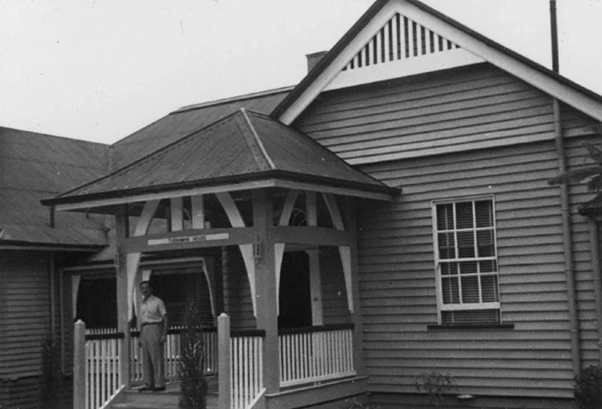
Photo credit: The House Detective
Turrawan or its new name as Clayfield House was located on the corner of Sandgate Road and London Road later has been relocated around the corner on the block onto London Road. Robin Dods designed several grand homes that were also used as medical practices for Brisbane’s prominent including Clayfield House that were called Turrawan.
Legacy of Clayfield House
Despite its many transformations, Clayfield House has endured as a testament to its rich history. Today, the house stands at 8 London Road, Clayfield, retaining its architectural grandeur and historical significance. It reflects both Robin Dods' visionary design and Dr Halford's contributions to Brisbane's medical history. From its origins as a combined residence and surgery to its current role as supported accommodation, Clayfield House continues to adapt, embodying the dynamic evolution of Brisbane’s suburban heritage.
Source: The Detective House YouTube, Federationhome.com, clayfieldnew.com.au,

